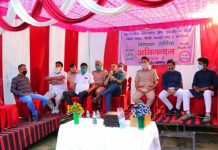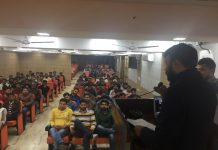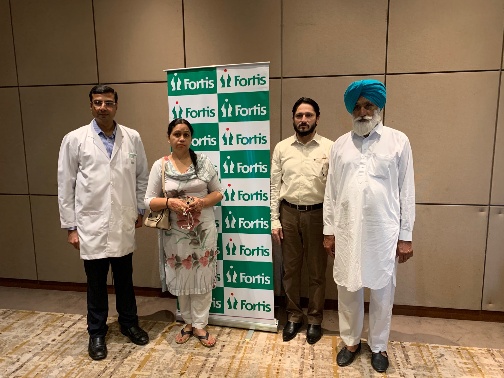Chandigarh
19 October 2019
DIVYA AZAD
Doctors at Fortis Hospital, Mohali claimed that robotic surgeries has a better success rate when it comes to urological procedures. This revelation was based on more than 150 such robotic assisted surgeries performed successfully at the hospital. This was shared by Dr Manish Ahuja, Consultant, Urology, Fortis Hospital, Mohali.
The use of robotic surgeries has been successful in bringing precision in surgeries. This helped to treat cases with complications as a 3D camera gave the surgeon more depth into the operable area. It also brought down time to recover as the blood loss during surgery is now reduced substantially. For complex prostate and kidney surgeries, the robotic assisted surgeries brought precision which helped improve the success rate than a traditional or even a key hole surgery. The camera also magnifies the view, thus, enabling the surgeon to work in complex areas with a far greater accuracy.
“This has enabled certain complex surgeries to be performed in the most effective, safe and precise way. Traditionally, the only way to do these operations was the open method. This entailed a big incision on the patient, post-operative pain requiring immobilization, and loss of time from work in addition to a big scar,” said Dr Manish Ahuja while speaking at a press conference here today.
The surgical robot improved upon these deficiencies. This method of surgery involves the use of certain special robotic instruments which are controlled by the surgeon using a computerized console. The robotic instruments are placed using very small keyhole cuts. A 3D camera is placed in the area to be operated. This gives the surgeon view of the third dimension – the depth. The use of robot also eliminates the human ‘tremor’ effect in surgeries with more accurate dissection and suturing resulting better surgical outcomes with less complications.
Dr Manish Ahuja shared the case of his patient Mr Bhupinder Singh, 67 years’ man from Bathinda, with the media. Dr Ahuja said, “When the patient came to us, he was already diagnosed with prostate cancer. It was in early stage and we planned for a robot assisted radical prostatectomy. The complex surgery was successfully completed. The pathological analysis of the removed prostate gland showed that the margins were clear. The prostate cancer was completely eliminated from the patient. He was released after 4 days of surgery.”
Sharing another case of 68-year-old Mr Onkar Singh from Hoshiarpur, Dr Ahuja said, “The patient was earlier diagnosed with prostate cancer. But since he underwent a transurethral resection of prostate (TURP) procedure before cancer was detected, it was a challenge to do another surgery at the same spot because of adhesions and bleeding. We planned a robotic surgery which gave us very good result with minimal blood loss. Post-surgery pathological analysis showed that cancer has completely been removed from body. He was discharged on 4th day after surgery in satisfactory condition.”
55-year-old Mrs. Surinder Kaur from Kharar underwent ultrasound for vague abdominal pain which picked up the presence of a left kidney tumour. Further tests showed this to be a cancerous growth of 5 cm size which was a Stage 1 tumour. She underwent Robot Assisted Partial Nephrectomy last month. Blood loss was minimal. Her recovery was quick and she was discharged on 4th day after surgery. The cancer bearing part of kidney was removed with great precision using robotic instruments. The pathological analysis of the tumour suggested that it had been completely cleared from the body.
Md Saifullah from Fatehgarh Sahib, a 42-year-old man had kidney stones last year which slipped down into ureter and caused blockage. This required two surgeries to clear up the blockage. But due to the stone induced damage, the ureter became narrow – developed a condition called stricture. He underwent robot assisted uretero-ureterostomy successfully 2 months back and is now completely pain free and stent free.















































